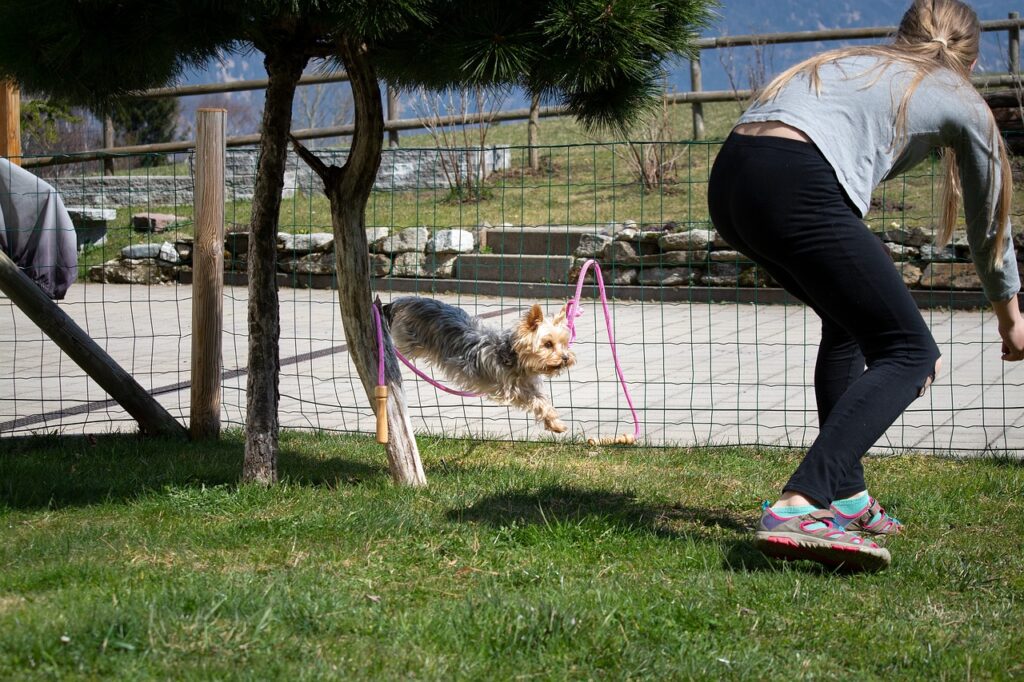E-collar training for dogs has become a popular method for teaching obedience and correcting unwanted behaviors. However, it is important to understand the proper use and purpose of e-collars to ensure the safety and well-being of your furry friend. This article will provide a comprehensive guide to e-collar training, covering everything from understanding how they work to choosing the right collar for your dog’s needs.
Key Takeaways
- E-collar training can be an effective tool for training dogs, but it should be used in conjunction with positive reinforcement techniques.
- Choosing the right e-collar for your dog’s needs is important, as different collars have different features and stimulation levels.
- Proper fit and placement of the e-collar on your dog is crucial for both effectiveness and safety.
- Setting appropriate levels of stimulation for your dog’s temperament and training goals is key to successful e-collar training.
- Consistency and patience are essential for successful e-collar training, and avoiding common mistakes and taking safety precautions is important for your dog’s well-being.
Understanding the Purpose of E-Collar Training for Dogs
E-collars, also known as electronic collars or shock collars, are devices that deliver a mild electric stimulation to a dog’s neck when triggered by a remote control. The purpose of e-collar training is not to cause pain or harm to the dog, but rather to provide a clear and consistent form of communication between the owner and the dog. The stimulation serves as a correction or reinforcement for desired behaviors.
One of the main benefits of e-collar training is its effectiveness in off-leash training. It allows owners to have control over their dogs even at a distance, which can be especially useful in situations where safety is a concern, such as near busy roads or in crowded areas. E-collar training can also be used to address behavioral issues such as excessive barking, digging, or jumping.
However, there are some misconceptions about e-collar training that need to be addressed. Some people believe that e-collars are cruel or inhumane, but when used properly and responsibly, they can be a valuable tool for training. It is important to remember that the stimulation delivered by the collar should be at a level that is appropriate for the individual dog and should never cause pain or distress.
Choosing the Right E-Collar for Your Dog’s Needs
When it comes to choosing an e-collar for your dog, there are several factors to consider. There are different types of e-collars available, including remote-controlled collars and bark collars. Remote-controlled collars allow the owner to deliver the stimulation manually, while bark collars are triggered by the dog’s barking.
It is important to consult with a professional trainer or behaviorist before purchasing an e-collar to ensure that you choose the right one for your dog’s needs. They can help you determine the appropriate level of stimulation and guide you in selecting a collar that is suitable for your dog’s size and breed.
Proper Fit and Placement of the E-Collar on Your Dog
Once you have chosen the right e-collar for your dog, it is crucial to ensure that it fits properly and is placed correctly on your dog’s neck. A poorly fitted or misplaced collar can cause discomfort or even injury to your dog.
To ensure a proper fit, measure your dog’s neck circumference and choose a collar that allows for adjustment. The collar should fit snugly, but not too tight. You should be able to fit two fingers between the collar and your dog’s neck.
The e-collar should be placed high on the neck, just below the jawline. This ensures that the stimulation is delivered to the correct area and is most effective. Avoid placing the collar too low on the neck, as this can interfere with your dog’s breathing and swallowing.
Setting Appropriate Levels of Stimulation for Effective Training
Setting the appropriate level of stimulation is crucial for effective e-collar training. It is important to start at a low level and gradually increase if necessary. The goal is to find the level that gets your dog’s attention without causing pain or distress.
Most e-collars have multiple levels of stimulation, ranging from very low to high. Start at the lowest level and observe your dog’s reaction. If they respond appropriately, such as stopping an unwanted behavior or coming when called, then the level is appropriate. If they do not respond, gradually increase the level until you see a response.
It is important to note that the level of stimulation needed may vary depending on the dog’s temperament and sensitivity. Some dogs may require a higher level of stimulation, while others may respond to a lower level. It is crucial to pay attention to your dog’s reaction and adjust the level accordingly.
Positive Reinforcement Techniques to Complement E-Collar Training
While e-collar training can be effective on its own, it is even more effective when combined with positive reinforcement techniques. Positive reinforcement involves rewarding your dog for desired behaviors, such as sitting or coming when called, with treats, praise, or play.
Using positive reinforcement alongside e-collar training helps to reinforce the desired behaviors and create a positive association with the training process. For example, if you are using the e-collar to teach your dog to come when called, you can use treats or praise as a reward when they respond correctly.
Combining positive reinforcement with e-collar training also helps to build a strong bond between you and your dog. It creates a positive and enjoyable training experience for both of you, which can lead to faster and more effective results.
Consistency and Patience: Keys to Successful E-Collar Training
Consistency and patience are key when it comes to e-collar training. Consistency means using the e-collar in a consistent manner and enforcing the same rules and commands every time. This helps your dog understand what is expected of them and reinforces the desired behaviors.
Patience is also important during e-collar training. Dogs learn at their own pace, and it may take time for them to understand and respond to the training. It is important to be patient with your dog and not get frustrated or give up if they do not respond immediately.
Consistency and patience go hand in hand. By being consistent in your training methods and patient with your dog’s progress, you are more likely to achieve successful results.
Avoiding Common Mistakes in E-Collar Training for Dogs
There are some common mistakes that dog owners make when using e-collars for training. One of the most common mistakes is using the e-collar as a punishment tool rather than a training tool. The purpose of the e-collar is not to punish your dog, but to provide clear and consistent communication.
Another common mistake is using the e-collar too harshly or at too high of a level. It is important to start at a low level and gradually increase if necessary. Using the e-collar at a high level can cause pain or distress to your dog and may lead to negative associations with the training process.
It is also important to avoid using the e-collar for every correction or command. The e-collar should be used as a tool to reinforce training, not as a substitute for proper training techniques. It is important to continue using positive reinforcement and other training methods alongside the e-collar.
Safety Precautions to Take When Using an E-Collar on Your Dog
Safety should always be a top priority when using an e-collar on your dog. There are several safety precautions that you should take to ensure the well-being of your furry friend.
Firstly, always read and follow the manufacturer’s instructions for the e-collar. This includes properly charging the collar, using it in the correct manner, and maintaining it regularly.
Secondly, never leave the e-collar on your dog for extended periods of time. It should only be worn during training sessions and should be removed when not in use.
Thirdly, regularly check your dog’s neck for any signs of irritation or discomfort. If you notice any redness, swelling, or sores, discontinue use of the e-collar and consult with a veterinarian.
Lastly, always monitor your dog’s behavior during training sessions. If you notice any signs of stress or discomfort, such as excessive panting, drooling, or avoidance behaviors, stop the training and reassess your methods.
Recognizing Signs of Stress or Discomfort in Your Dog During E-Collar Training
It is important to be able to recognize signs of stress or discomfort in your dog during e-collar training. Dogs communicate through body language, and it is crucial to pay attention to their behavior and respond accordingly.
Some signs of stress or discomfort in dogs during e-collar training include panting, drooling, pacing, avoidance behaviors, and excessive scratching or licking. If you notice any of these signs, it is important to stop the training and assess the situation.
If your dog is showing signs of stress or discomfort, it may be necessary to adjust the level of stimulation or take a break from training. It is important to listen to your dog and prioritize their well-being over the training process.
Knowing When and How to Gradually Phase Out E-Collar Training for Your Dog
E-collar training should not be a lifelong requirement for your dog. The goal is to use the e-collar as a training tool until your dog has learned the desired behaviors and can respond reliably without the need for stimulation.
Knowing when to phase out e-collar training depends on your dog’s progress and individual needs. Some dogs may require longer periods of e-collar training, while others may progress more quickly.
To gradually phase out e-collar training, start by reducing the frequency of e-collar use. Use the e-collar only in situations where it is necessary, such as off-leash walks or in high-distraction environments. Gradually decrease the level of stimulation until it is no longer needed.
It is important to continue using positive reinforcement techniques alongside the e-collar during this transition period. Reward your dog for desired behaviors with treats, praise, or play to reinforce their understanding and response.
In conclusion, e-collar training can be an effective method for teaching obedience and correcting unwanted behaviors in dogs. However, it is crucial to understand the proper use and purpose of e-collars to ensure the safety and well-being of your furry friend.
Choosing the right e-collar for your dog’s needs, ensuring a proper fit and placement, setting appropriate levels of stimulation, and using positive reinforcement techniques are all important aspects of successful e-collar training. Consistency, patience, and avoiding common mistakes are also key to achieving desired results.
Remember to prioritize safety during e-collar training and to monitor your dog’s behavior for signs of stress or discomfort. Knowing when and how to gradually phase out e-collar training is also important for the long-term success of your dog’s training.
Seeking professional guidance from a trainer or behaviorist can provide valuable support and guidance throughout the e-collar training process. They can help you choose the right collar, teach you proper techniques, and address any concerns or questions you may have.
With proper use and understanding, e-collar training can be a valuable tool for teaching obedience and ensuring the safety and well-being of your furry friend.
If you’re interested in dog training, you may also want to check out this informative article on “Methods for Training Your Dog to Stay Within the Yard.” This article provides valuable insights and techniques for teaching your furry friend to stay within the boundaries of your yard, ensuring their safety and giving you peace of mind. Click here to read more about it.



